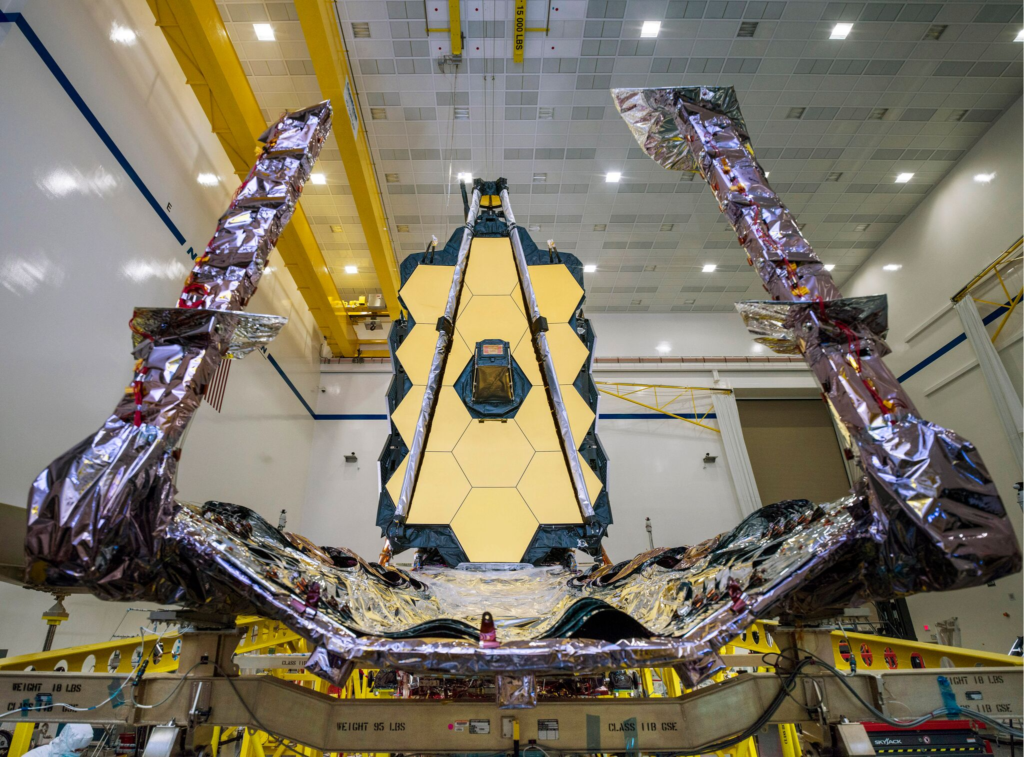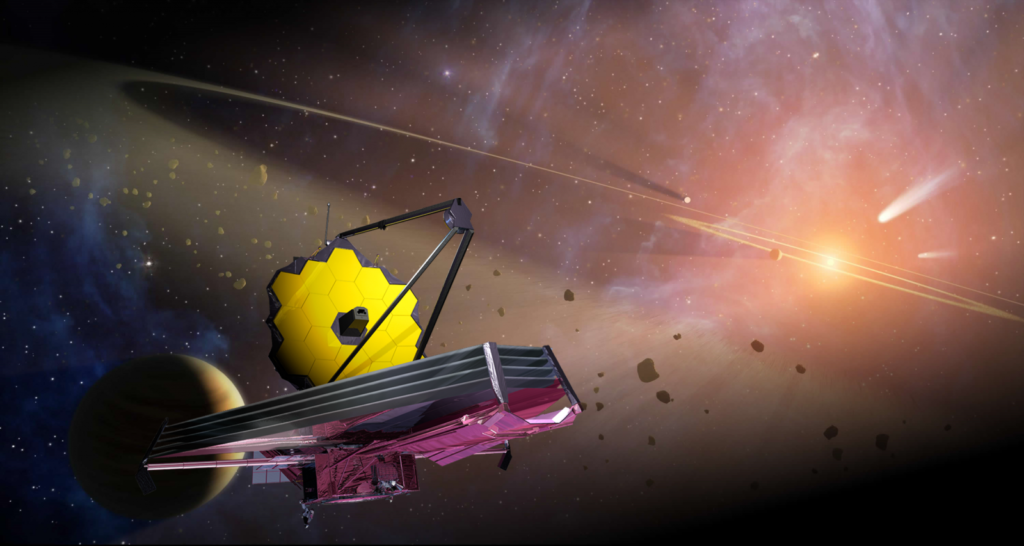
Webb Continues To Show Promising Results
As per usual, the James Webb Space Telescope has stayed busy over the past few weeks in preparation for consistent science operations expected to happen not long from now. The next generation telescope is meant to look into the past of the Universe and discover some incredible things. While it cost billions of dollars and took decades to create, it will show off whether or not that investment was worth it very soon.
Just a few days ago NASA provided an update on the JWST. They pointed out that 4 Webb instruments are fully ready for science. This comes in addition to more progress on its checklist and more. Not to mention the first full color images set to be released in a very short period of time. All of which will help us learn more about the Universe we live in.
In total there were 17 different modes that needed to be checked and tested. Once complete, Webb will be one step closer to being complete. NIRSpec for example just acquired multiple targets and showed off its capabilities. Here I will go more in-depth into some of the JWST’s recent progress, important dates, and what to expect in the near future.
Recent Updates

Starting only two days ago on June 27th, NASA tweeted saying, “The first of our 4 Webb instruments is fully ready for science! NIRISS, built by @csa_asc, is a camera and a spectrograph capable of analyzing exoplanet atmospheres.” This tweet included an image showing Webb and a spectrum of color. NASA went more in depth and highlighted that, “You’re seeing a test spectrum of a star, meant to demonstrate NIRISS’s science capabilities. Each color corresponds to a different wavelength of infrared light detected by Webb’s NIRISS. The black lines are the signature of the hydrogen present in the star.”
More specifically, one of the James Webb Space Telescope’s four primary scientific instruments, known as the Near-Infrared Imager and Slitless Spectrograph instrument (NIRISS), has concluded its postlaunch preparations and is now ready for science. The last NIRISS mode to be checked off before the instrument was declared ready to begin scientific operations was the Single Object Slitless Spectroscopy (SOSS) capability. The heart of the SOSS mode is a specialized prism assembly that disperses the light of a cosmic source to create three distinctive spectra (rainbows), revealing the hues of more than 2,000 infrared colors collected simultaneously in a single observation. This mode will be specifically used to probe the atmospheres of transiting exoplanets, i.e., planets that happen to eclipse their star periodically, momentarily dimming the star’s brightness for a period of time. By comparing the spectra collected during and before or after a transit event with great precision, one can determine not only whether or not the exoplanet has an atmosphere, but also what atoms and molecules are in it.
“I’m so excited and thrilled to think that we’ve finally reached the end of this two-decade-long journey of Canada’s contribution to the mission. All four NIRISS modes are not only ready, but the instrument as a whole is performing significantly better than we predicted. I am pinching myself at the thought that we are just days away from the start of science operations, and in particular from NIRISS probing its first exoplanet atmospheres,” said René Doyon, principal investigator for NIRISS, as well as Webb’s Fine Guidance Sensor, at the University of Montreal. Taking a closer look at the image mentioned prior, this is a test detector image from the NIRISS instrument operated in its single-object slitless spectroscopy (SOSS) mode while pointing at a bright star. Each color seen in the image corresponds to a specific infrared wavelength between 0.6 and 2.8 microns.
As of right now, with NIRISS postlaunch commissioning activities concluded, the Webb team will continue to focus on checking off the remaining 4 modes on its other instruments. Most recently NIRSpec’s Fixed Slit Spectroscopy mode was completed yesterday. This leaves 4 modes left to be checked, 2 for NIRSpec, 1 for NIRCam, and 1 for MIRI. In addition, NASA’s James Webb Space Telescope will release its first full-color images and spectroscopic data on July 12, 2022.
Acquiring Targets

As NASA ramps down the final commissioning activities, some openings in the schedule have appeared. The team has started to take some of the first science data, getting it ready to release, which will mark the official end of commissioning Webb and the start of routine science operations. This week the agency asked Tracy Beck, Tony Keyes, and Charles Proffitt, all NIRSpec instrument scientists at the Space Telescope Science Institute (STScI), to tell them about how Webb gets the targets lined up for observation with the NIRSpec instrument.
“The Near-Infrared Spectrograph is the instrument on the Webb telescope that observes spectra of astrophysical and planetary objects at near infrared wavelengths. The NIRSpec Grating Wheel Assembly (GWA) uses diffraction gratings or a prism to separate the wavelengths of incoming light into a spectrum. Study of the intensity or brightness of light across the wavelengths can provide key diagnostic information about the nature of various objects across the universe, from extrasolar planets around distant stars, to faint galaxies at the edge of the universe, and objects in our own solar system. NIRSpec will observe them all.
“In addition to the gratings and a prism, the NIRSpec GWA also has a mirror that is primarily used to ‘acquire’ targets – to image them and place them at the proper locations in the instrument to observe a spectrum. NIRSpec has two methods for target acquisition (TA): the Wide Aperture Target Acquisition (WATA) and the Micro-Shutter Assembly (MSA) -based Target Acquisition (MSATA). “The WATA process takes an image of a single astrophysical target through the wide ‘S1600A1’ fixed slit to determine its position on the sky as seen through the instrument. The software on-board the Webb telescope autonomously calculates an offset to move the telescope and accurately position either this target or another nearby target at the optimal location in NIRSpec to spread the light into a spectrum. During instrument commissioning, the excellent performance of WATA has been demonstrated on the sky for all four of the NIRSpec observing modes: integral field unit imaging spectroscopy, fixed slit spectroscopy, bright object time series, and multi-object spectroscopy.
“NIRSpec includes the multi-object spectroscopy (MOS) mode, where spectra of dozens to hundreds of science targets will be observed at one time. This requires specialized apertures that can be configured by opening and closing specific tiny doorways (microshutters) of the 250,000 total that are arranged in a rectangular grid in the MSA, allowing individual targets to be observed with little contamination from nearby objects or background light. In this case, a simulation of the NIRSpec MSA-based Target acquisition process, demonstrated the NIRSpec Sharpness. NIRSpec uses “Reference Stars” observed through the fixed slits in the central area and the MSA to carefully correct the small x – y and position angle (rotation) offsets of the observatory so that the science targets will be aligned properly with their shutters across the entire NIRSpec MOS field of view.
“During MSATA, a set of target acquisition reference stars are imaged through open microshutters. The stellar positions are calculated autonomously by Webb’s on-board software and used to correct the initial spacecraft pointing and position angle (rotation). To allow accurate correction of the observed spectra for the centering of each source in its shutter, this process must place the MOS science targets across the full span of the NIRSpec field of view with an accuracy of 1/10th of a NIRSpec shutter width – or just 20 milli-arcseconds on the sky (the approximate size of a bumblebee, 1.5 cm, viewed from 150 km away). They finished by highlighting that “The recent confirmation of NIRSpec target acquisition and additional work on the four science modes, primes the NIRSpec team for our last activities of commissioning. We cannot wait to see the first NIRSpec science observations coming this summer!
In the future, many of the objects that the Webb will study, such as the first galaxies to form after the Big Bang, are so faint, that Webb’s giant mirror must stare at them for hundreds of hours in order to collect enough light to form a spectrum. In order to study thousands of galaxies during its 5 year mission, the NIRSpec is designed to observe 100 objects simultaneously. The NIRSpec will be the first spectrograph in space that has this remarkable multi-object capability. These are just some of the features that make this technology stand out.
Conclusion
The James Webb Space Telescope is getting very close to consistent science operations. With more modes complete, the telescope now only has 4 out of 17 left to test before they are all done. This will make another significant milestone for the JWST. This comes in addition to the release of full color images and data about two weeks from now. We will have to wait and see how it progresses and the impact it has on the space industry.